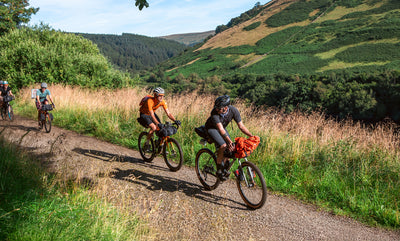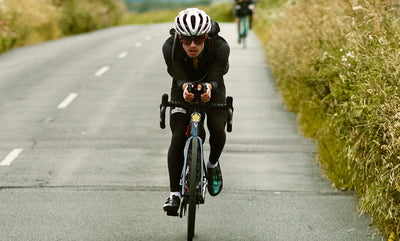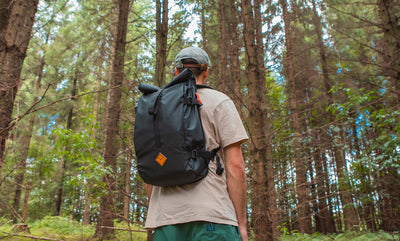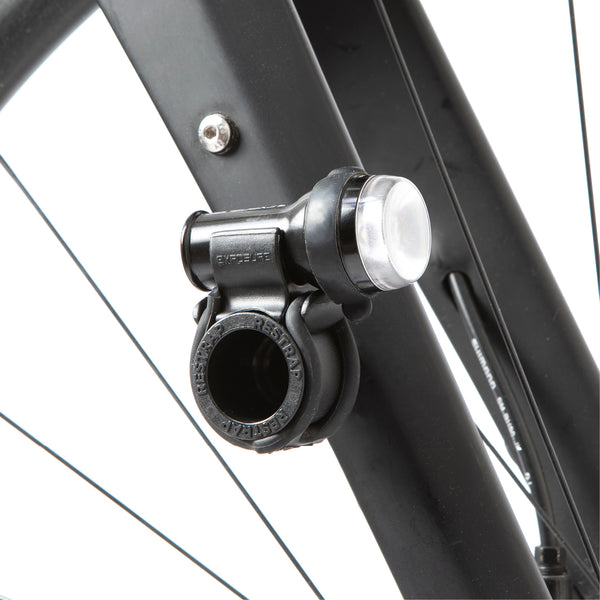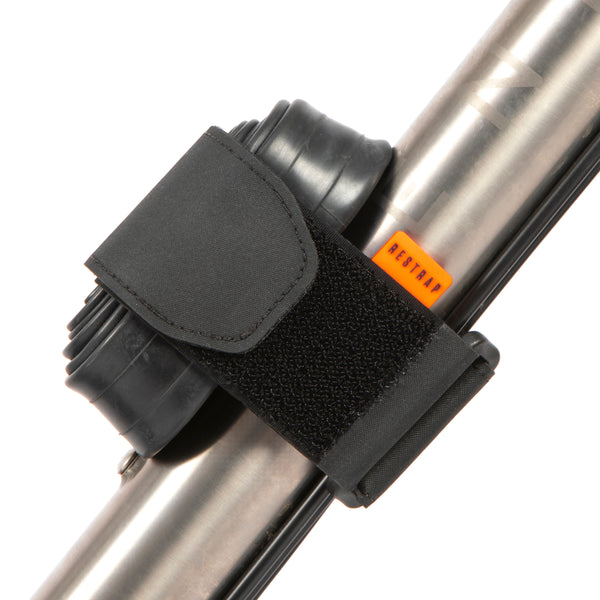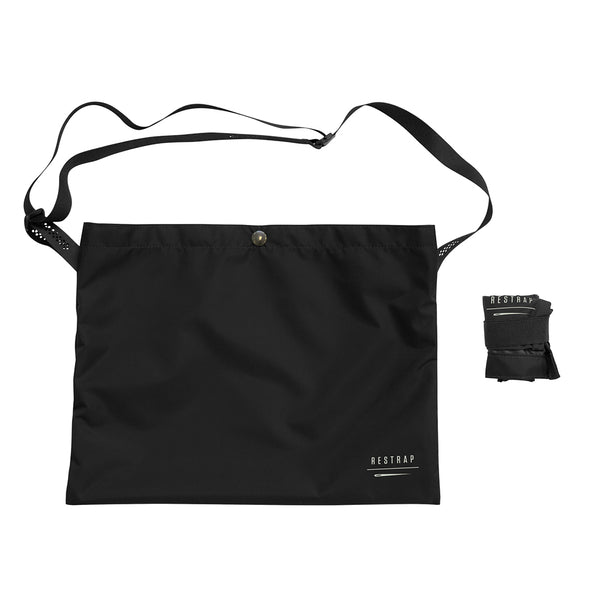Your cart is empty!
Riding The Deeside Trail

The Deeside Trail is a figure of eight in Aberdeenshire along the Dee valley. 85% off road - a mixture of single and double track of all grades from greasy-rocked, technical descents to flowing loamy woodland. You may encounter wheel-deep bog, unrelenting climbs among heather to the tops of big mounds, and pushes up loose landrover track; broken up by wide, easy gravel and the odd back road. It has 4,600m of climbing- a significant amount over 240 off-road kilometres.

As is often the case, we timed our departure with the opening of the public toilets. It had been a while and we weren’t quite as slick as we used to be, with numerous trips back to the van for forgotten items, faffing with overshoes for the first time in months, and the niggling worry that I hadn’t packed enough snacks. After 2020 being a year of continued cancellations - and adjusting by switching sufferfests for leisurely rides - we were in no physical or mental state to tackle the trail in one. So we rolled slowly out of the car park just after sunrise to spend two days charting this unknown territory of Deeside.

The area feels inaccessible to those without cars and not local to the area. And though not as glamorous as the high plateaus of the Cairngorms or the magic depicted in The Living Mountain, it’s a hidden gem. It lies broadly east and some parts south of those familiar landscapes, whose paths are etched with memories that welcome me back whenever I pass back over them. When here, though, the wild places become incredibly accessible: landrover tracks scar hillsides in all directions, making for light work getting to the tops of the big hills. And even to the tops of Munros. From there, single track and bog trots abound that take you into and out of the Angus Glens and the Cairngorms with very few people around and a real sense of remoteness. There are basic shooting lodges all over the place which have been invaluable in escaping wind, rain, and midges. And there are settlements along the river Dee for resupply, cafes and pubs. The Fife Arms and its iconic flying stag in particular is always well worth an early stop.

Soon out of Ballater we crossed into the Cambus o’ May woods and climbed the loamy forest path dappled with the soft autumn sun to the clearing at the top, immediately descending on well-maintained, fast-flowing single track back to the road. Within the first hour we had been gifted this immaculate slice of Deeside. We were straight onto another piece of flowing single-track around Loch Kinnord. I had, by this stage, a permanent grin as is the way when on confidence-inspiring trails. The Deeside Trail is not about straight lines. I used to resent the way in which off-road routes de-tour you away from the most efficient route. But to what? and why? Trails like these are not about just finishing. This route is about the journeying: you take the community mountain bike trails because they are there, and go to the tops because you should, and all the while you’d be a fool for wishing it away. The views are almost always worth your present-mindedness. Lose focus and you’ll likely veer off the path. The descents (especially on a gravel bike) require focus and handling; the ground underneath can be cushioning and confidence inspiring, but just as often greasy and loose.

I was riding a Mason Bokeh with a meaty 1.95” front tyre. In hindsight, a mountain bike would have saved my hands and arms which, by the end of the first day, had lost the strength to apply full force to the brakes. I was having to use the weight of my body pressed down onto the hoods to get me back to Ballater after 12 hours. This was a ride we had underestimated. That morning we had stopped for coffee 30km in having gone down each of the mtb trails outside Tarland Community woodland. And this optimism was a mistake. Leaving at 8:30am we didn’t arrive into Banchory (80km in) until 18:00 which was an outrageously long time given our expectations. Much of the interim had been spent slowly grinding up wet, boggy single track through the heather, my chilblained feet sloshing around in insubstantial overshoes. I hated this path. We had tracked quite far east by this point and the hills didn’t have the awe I often seek when riding my bike. I resented every climb to the top of every ill-defined and exhausting lump (turns out I had lost all of that present-minded zen). I was probably hungry. Progress was slowed by an earlier than expected sunset. We hadn’t realised the clocks had just gone back and it was pitch dark by 17:00, which left us to follow faint tracks in a dense woodland near Banchory for twice as long as it could have taken. I was at the end of my rope by this point, willing the fish and chip shop to present itself long before it did. But it did, as it always does eventually, and we stood in the doorway of a closed butchers to devour them tucked out of the wind. We still had a long way to go, with 40km and 3 significant climbs to the south of Banchory, Aboyne and through the Tanar estate without anything to see before we’d be back to our van, bed, and food.

The following morning saw us (three now, after Jen waited patiently with a bottle of Prosecco for us to eventually return to the van the night before) heading out on the western loop to Loch Muick. Loch Muick is awesome. Steep paths and landrover tracks, waterfalls, bothies, a Munro. We climbed to the foot of Lochnagar. This is not a climbable ascent, it’s a push practically the whole way up over very steep and loose rubble. But the views are wide and breathtaking and it leads straight to a fast gravel descent veering into a deciduous woodland that brings you back to the Dee valley floor just outside Braemar.

The route really is expertly pieced together. After another lengthy and optimistic coffee stop we turned on to single-track running parallel to the road toward the Linn of Dee and the familiar ground up Glen Lui. From there a steep push took us again into unknown territory. We didn’t have to push for long before my bike handling skills were tested on narrow (but definitely rideable as Lee, hundreds of metres in front, can attest) track to the water of Quoich, traversing it, and dropping again into a new glen with an angle onto the Cairngorms none of us had seen before. The rain had given out, the burnt yellow of the larch was amplified against the greys of the sky, and we were in high spirits having arrived somewhere totally new.

After crossing the river we were on the loamiest, most undulating and glorious single track that took us up and out of the glen to a plateau. Perhaps it wasn’t that sweet, but it far surpassed my expectations given the OS map didn’t show a path at all. From this vantage point tracks led off in all directions and I felt then a strong resolve to return and make sense of them. From here I made the decision to veer off route down Gypsy glen and back to Ballater by some forest tracks. It was dark and I had heard the next section was to be very technical (turns out it isn’t and it’s one of the loveliest bits). I was wrecked, tired, and my resilience felt too low to endure 30km of possibly quite scary riding without a good view to make it worthwhile.

I was astounded that the route finished me off like that, and I was giddy with the excitement of all the new trails I had ridden on and landscapes I had witnessed for the first time. Deeside, already an area of possibility, exploded out from me in all directions of new possibility. It remains firmly on the list of ‘places I could definitely live’ and I am determined to bury myself by completing the full loop ITT in 2021. There are only a handful of riders on the mass start each year and a current record of 20h 59 by Gary Tompsett (and no recorded female finishers?). Lots to ride for!
Alice Lemkes














